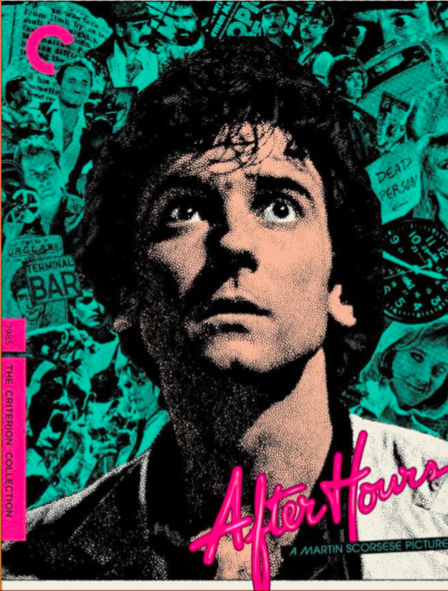
By Frannie Edwards-Hughes
“After Hours” (1985), written by first-time screenwriter Joseph Minion and directed by the acclaimed Martin Scorsese, is both haunting and comical, depicting a bizarre night in New York City. The strange series of events unfolds when Paul Hackett, played by Griffin Dunne, grows tired of his dull job as a computer word-processing consultant in the city. He decides to take a taxi to see Marcy, a girl he met at a coffee shop earlier that night. Paul’s escape from his mundane life challenges both his sanity – and that of the audience – when he faces increasingly absurd challenges while repeatedly failing to make it back home.
Paul finds himself in SoHo, which Scorsese portrays as a seemingly alternate dimension of New York City, where he is promised a plaster of a Paris bagel but instead encounters suicide, punk clubs, and a mob that believes he is a burglar. Coincidence propels the plot forward; each time he is offered help or a way out of this nightmare, he becomes more entangled in the chaos of the night. As Paul struggles not only to return home but to survive, he starts to lose his sense of self. His desperation culminates in the film’s conclusion, where he is Mod Podge-ed and transformed into a sculpture, ultimately ending up in front of his office just as it opens. Paul sits at his desk, greeted by his computer’s cheerful “good morning.” As errors pile up and his mind deteriorates, he finds himself back at the very place he sought to escape: his monotonous job. When the end credits roll, we see that Paul’s desk is now empty. Has he gone home to sleep, only to return tomorrow? Or has his chaotic night finally driven him to quit his job and break free from the mediocrity that has tormented him?
The editing and cinematography, characterized by fast-paced cuts and an overwhelming neon palette, evoke a disorienting and chaotic atmosphere that enhances our understanding of Paul’s experience. Throughout his night in the city, we witness Paul growing increasingly exhausted, left completely wrung out by the film’s conclusion. Viewers likely share this feeling of being intrigued yet drained, they may be compelled to turn off the TV and go to bed, but first, they must see the story through. The film masterfully evokes discomfort and eeriness while simultaneously drawing viewers deeper into the surreal world that Scorsese has created.
Though Scorsese’s meaning behind the film may seem elusive, it reflects his own struggles at the time. Before making “After Hours,” he faced challenges in producing “The Last Temptation of Christ,” as Paramount abandoned the project after a Protestant women’s group protested against its controversial depictions of Jesus Christ. His frustration over that project fueled his desire to create something revitalizing. This sense of desperation resonates in Paul’s character, who longs to escape his circumstances. The film’s comedic interpretation of film noir and thrillers distracts Paul with often meaningless objects, mirroring the viewer’s experience and echoing Scorsese’s own life during the directing process.
This film is a perfect late-night watch, immersing viewers in the surreal world while offering humor through its strangeness. If you’re interested in exploring the after-hours of New York City, the University of Puget Sound Campus Films will be screening “After Hours” in Rausch on Nov. 11 and 12 at 7 p.m.
